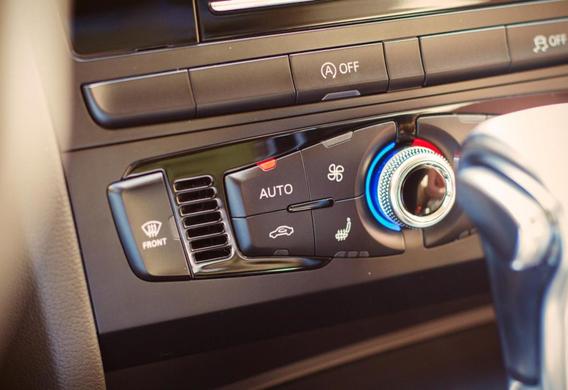
Today, people are seeking to create the most comfortable conditions around them. And, of course, everyone wants to breathe purified fresh air, not unhealthy chemicals. Especially relevant is the desire when the cool spring or summer day goes out on the road and gets into the car traffic and, for several hours, breathe such "fresh" air, that it is time to put on the gas mask. The automatic recycling of the air of the vehicle can help in this situation. Appointment
Appointment
Recycling (a circle) of air is called air intake directly from the passenger compartment, not from the street. When automatic mode is set, the installation itself determines when the outside air flow is blocked. With this mode, it is possible to avoid entering the salon of polluted air long before passengers feel the unpleasant smell themselves. There are no odour as such for some harmful substances.
With the development of electronics, the technical equipment of the car began to change. Instead of conventional car air conditioners, climate control systems have emerged. If the normal conditioner is to be manually adjustable, the climate control is designed for automatic operation. The enabled system goes into standby mode and begins to control how much air corresponds to the data that is stored in the system's memory.
The first full climate control was set in 1979 by Mercedes-Benz to the Model W126.
In 1998, the German manufacturer introduced climate control system-control of the CL and S-class systems-around 250 comparative characteristics of the microclimate from 40 degrees of frost to 50 degrees of heat!
Of course, electronics significantly expanded air conditioning. New climate sensors are emerging every year. In particular, air quality sensors can detect the concentration of carbon monoxide and nitrogen in the environment and, if necessary, automatically switch the climate-control of the recycling regime by blocking the flow of polluted air into the passenger compartment.
Such systems are used in many models of cars, for example, on Volkswagen Phaeton, Mitsubishi Outlander, Nissan Teana and others.
Device and operating principle
The principle of operation of such a system is quite simple: as only outdoor air with sensor detects harmful substances, access of polluted air is suspended immediately.
The recycling mode is automatically switched on. The movement of the races into fresh air and recycling modes is carried out by the electric motor (the executive mechanism). As soon as the fresh air is closed, the recirculation opens and vice versa.
A combined filter, consisting of a micro-filter element with activated carbon, is located in the air intake area. If the concentration of harmful substances does not exceed the permissible concentration, the filter shall be independent. If there was no filter, the system would have worked all the time because there was always a percentage of harmful substances in the air. To make the system work without fail, you must periodically change the combined filter.
Once the concentration of impurities begins to rise, the air quality sensor immediately behind the filter will identify harmful substances in the air. Oxygen sensor is operational. It is the one that signals the control unit of the climate system-control of the need to turn on the recycling regime, after which the servo is moved by the shale. Once the concentration of harmful substances decreases, the servitoris restates the flaps into its original position.
The sensor is capable of detecting carbon monoxide (CO), hexane (C6H14), benzene (C6H6). P-heptane (C7H16) and nitric oxide, hydrogen sulfide-that is, substances that are harmful to breathing and are contained in the exhaust gas of petrol and diesel engines.
Some systems, regardless of the degree of air pollution, are automatically switched to the recycling regime when cleaning up and washing the windshield so that the sharp smell of the cleaning fluid does not enter the passenger compartment. In addition, recycling is automatically included in the reverse movement to block the exhaust flow from the exhaust pipe.
Plus and Minus
The automatic recycling regime helps make the trip as comfortable as possible, as the driver and passengers do not have to consider whether or not to include this mode. At the same time, they are confident that they breathe purified air.
The negative side is that there is no air-exchange in the recycling regime, which means that after a period of time the glass may start to warm.









